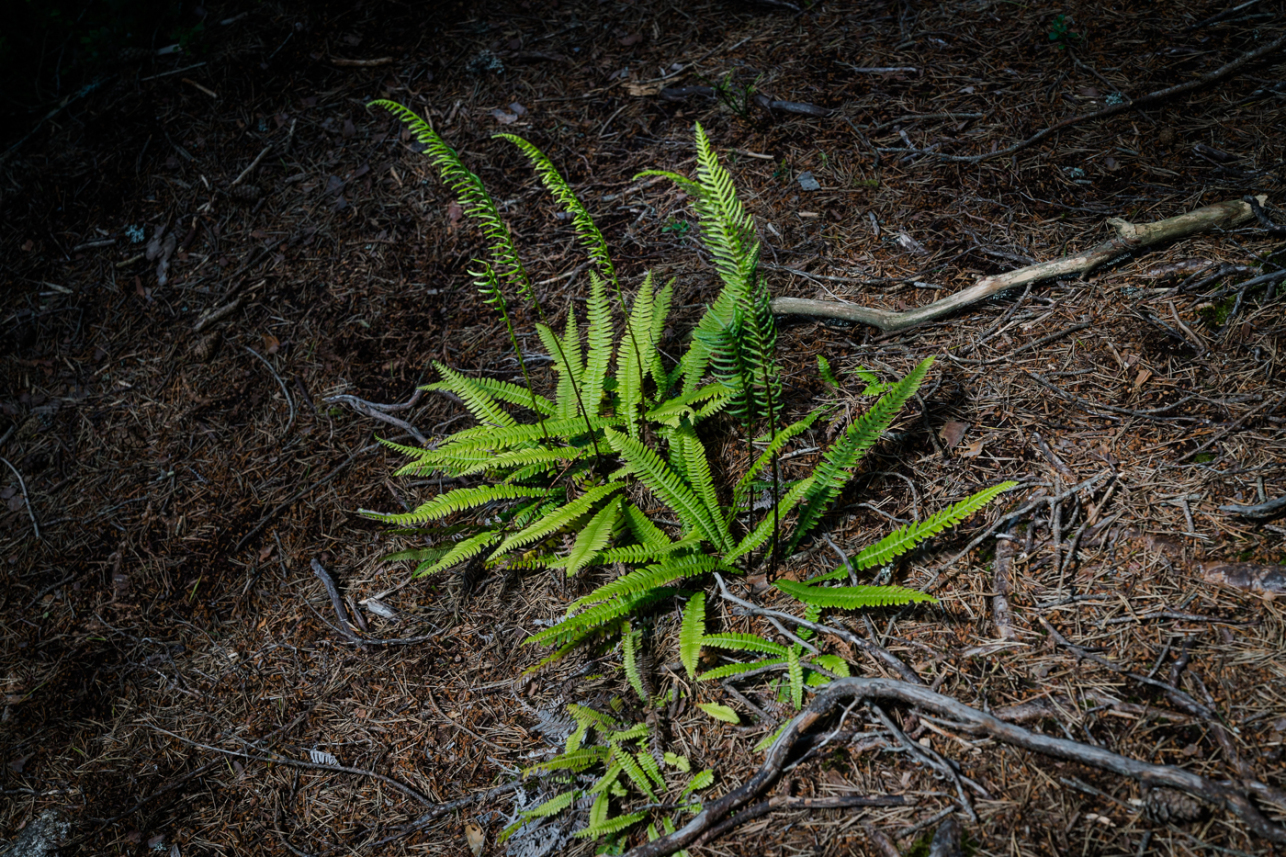Field Notes: Quinag measures up
Engagement Manager Romany Garnett reports on how volunteers have been helping our team capture a new set of data to show seedling densities in five zones around Quinag.
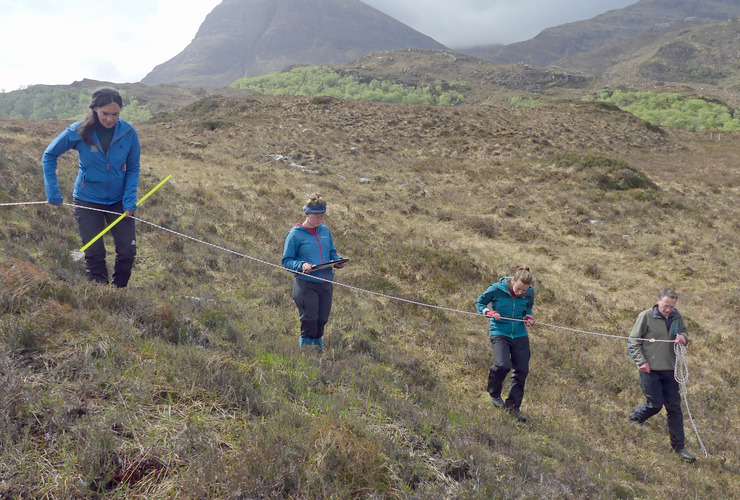
The low sun is hitting the hillside making the green hues sparkle. Newly emerged leaves from trees dance in the light. They look tender and fresh. It is a great time to be out on the hill and the air is like champagne.
We are out on Quinag working on a new seedling monitoring project. Our aim is to record density of seedlings within different zones, as well as the percentage of seedlings that are below and above vegetation height. The data will provide us with a clearer picture of what is happening on Quinag.
A measuring ruler is jabbed into the thick heather beside a rowan seedling and we record its height: 35cm. We inspect the shoots to look at percentage browsed. Each seedling has a history to tell and close examination can reveal the various struggles each tree has had to reach this stage in its lifecyle.
Helping me capture the measurements are Imogen Gray (a super volunteer from the University of Sheffield) and my Trust colleagues Mike Daniels and Mhairi Stewart. We are joined by one of the Trust’s founders, Denis Mollison on the first day.
As we ate sandwiches by the sea, Denis worked out the density of seedlings based on the number from one of the recording sheets: 20 seedlings in a circular plot 25 metres across extrapolates to about 400 per hectare for a larger area of similar conditions.
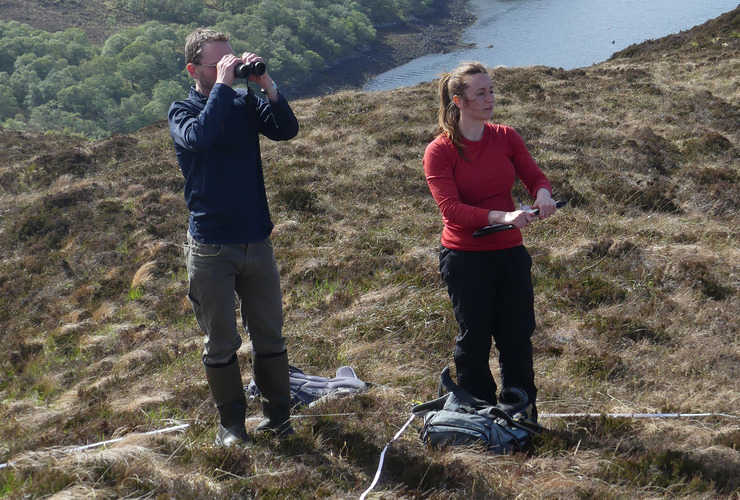
A new process
Our ongoing work to measure marked seedlings already records the height and recent browsing of each seedling. Each seedling has a tag and GPS coordinates, so it can be found again and the measurement compared to the previous year’s growth. This is useful data, but we needed a new process to capture the density of seedlings across larger areas.
After consulting with several experts, I ordered longer tape measures and the necessary equipment to have several groups on the ground at the same time. Next, I adapted a field sheet to focus on density of seedlings, species of tree and various other things like factors limiting regeneration.
Our aim was to take five measurements of each species nearest to the centre of the plot, plus five random vegetation height measurements. The field sheet was adjusted several times and we worked on making our sampling strategy simpler and clearer.
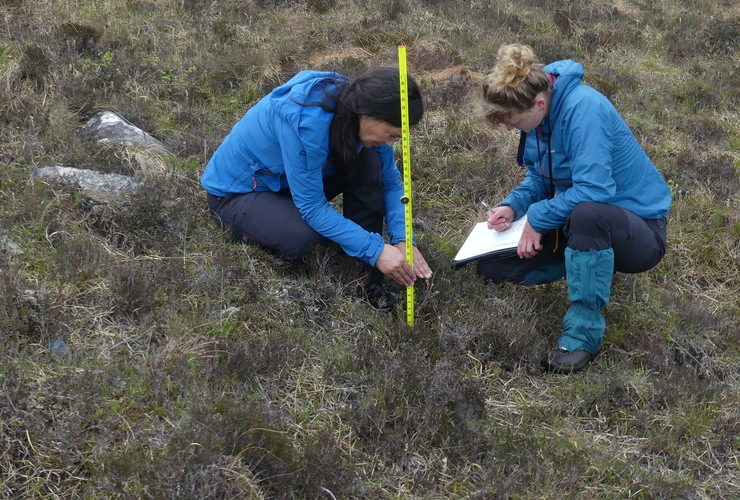
Measure by measure
In total we have 55 plots on Quinag. The centre of the plot is marked with a peg and then tape measures are rolled out to 25m across. It is divided into four parts with one rope that is moved around the circle, everything is counted as the line passes over the ground. The more people helping, the easier it is and I was fortunate to be joined by members of staff and volunteers who were eager to help.
Monitoring is repetitive work, but accuracy is key for consistency. By the end of the day this gets more difficult, and mistakes sometime happen, and then errors have to be redone and it takes longer. The rain came down on the second day and we walked back to the cars very damp.
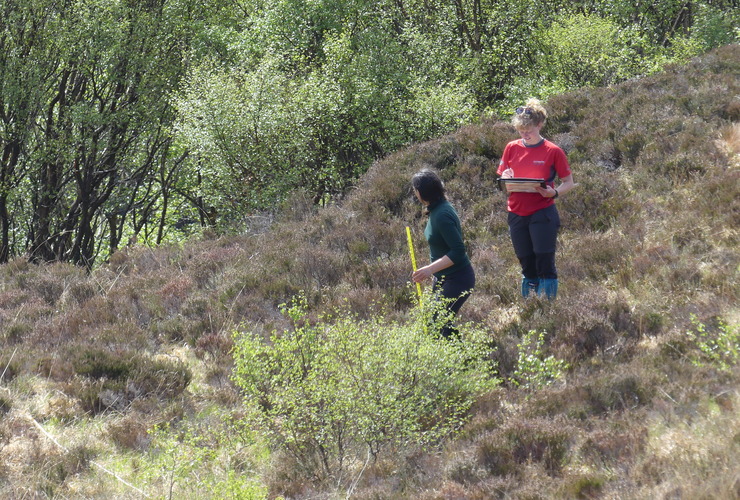
Windblown species
The plots were divided into five zones and were chosen within a certain distance from a seed source, so that the likelihood of regeneration happening was quite high.
Windblown seed species such as birch and willow were the dominant species. Rowan was also reasonably frequent being helped along by the migrating winter thrushes such as the fieldfare and redwing. These birds spread seed berries quite effectively enabling rowan and holly trees to spread across the hillside.
Nut bearing trees such as hazel and oak are less mobile and generally grow where they roll. But small mammals can help by carrying them to a cache for a later snack and then misplacing them. The hazel nut for example can then germinate and grow, but is very palatable to herbivores as are aspen. Aspen spread from suckers and within a certain distance from the parent. The young seedling clones shoot up nearby, but these are again less mobile across large areas.
The findings of this project are still to be analysed but it is hoped that with a bit of data crunching, and the help of a statistician, the data will provide an insight into the density of seedlings and what’s happening to the regeneration across parts of Quinag.
- Special thanks to Mike, Mhairi, Rich, Lynn, Annabel, Sophie, Kat, John and our fantastic volunteers - Imogen and Denis - for all their help.
Photography courtesy of Denis Mollison
